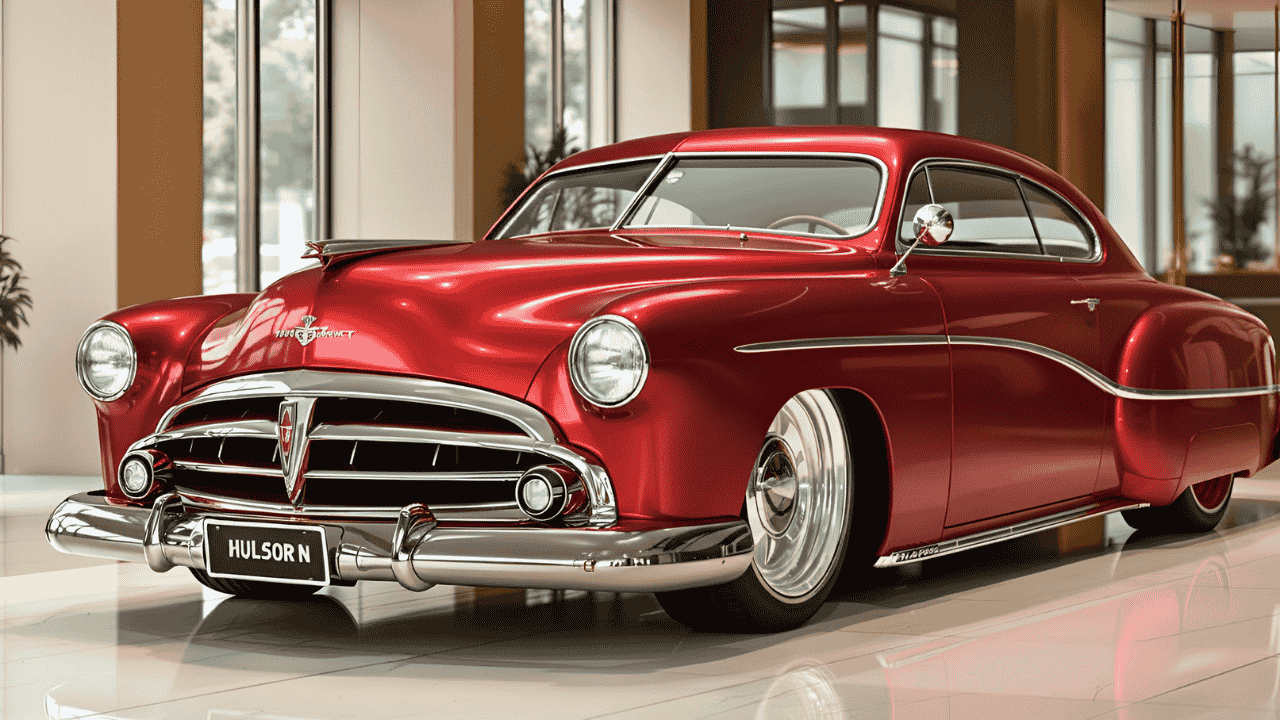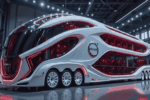The 1951 Hudson Hornet stands tall as one of the most iconic cars of the early 1950s, a machine that not only defined American automotive engineering but also dominated the racing world like no other. When it first rolled off the assembly line, the Hornet was an immediate sensation—sleek, powerful, and ahead of its time. Built on Hudson’s famous “step-down” chassis, the car’s low center of gravity gave it unmatched stability and handling, which made it a force to reckon with both on the streets and the race tracks. The Hornet wasn’t just another stylish sedan; it was a technological marvel that redefined what a car could achieve in its era.
How the Design of the Hudson Hornet Set It Apart
One of the most innovative aspects of the 1951 Hudson Hornet was its groundbreaking “step-down” design. Unlike other cars that had bodies mounted on top of their frames, Hudson engineers designed the Hornet’s floor pan to sit between the frame rails. This allowed the car to have a lower stance without sacrificing interior space. The result was a vehicle that handled better, felt more stable in corners, and offered a comfortable yet sporty ride. The low-slung body also gave the Hornet a distinctive, aerodynamic look that was instantly recognizable. The wide stance, flowing fenders, and curved windshield created an elegant yet aggressive aesthetic that appealed to both family buyers and performance enthusiasts.
What is the Power Behind the Hudson Hornet
Under the hood, the 1951 Hudson Hornet packed a powerful straight-six engine known as the “Twin H-Power” setup. This 308-cubic-inch flathead engine delivered an impressive 145 horsepower in its standard form, but with the Twin H-Power carburetor system, it could push closer to 170 horsepower. an extraordinary figure for the time. Unlike the heavy V8s that dominated later decades, the Hornet’s straight-six offered a smooth power delivery and incredible torque, making it a favorite among race car drivers. Its lightweight and balanced design allowed the car to accelerate quickly and maintain high speeds with ease, a key reason why the Hudson Hornet became unbeatable in NASCAR racing.
When the Hudson Hornet Became a Racing Legend
The true fame of the 1951 Hudson Hornet was earned on the racetrack. During the early 1950s, the Hornet became the undisputed king of NASCAR, winning over 80% of the major stock car races between 1951 and 1954. Legendary drivers like Marshall Teague, Herb Thomas, and Tim Flock piloted the Hornet to victory after victory, earning it the nickname “Fabulous Hudson Hornet.” Its combination of power, balance, and reliability made it nearly unbeatable, while its low center of gravity allowed drivers to take corners at higher speeds than their competitors. The Hornet didn’t just win races—it set a new standard for racing performance and engineering excellence.
How the Hudson Hornet Influenced Future Car Designs
The 1951 Hudson Hornet’s innovative design left a lasting impact on the automotive industry. Its step-down construction inspired future generations of car manufacturers to explore lower chassis designs for improved aerodynamics and safety. The focus on stability and handling over pure horsepower was a concept that would later define performance cars in the decades to come. The Hornet also proved that six-cylinder engines could compete with and even outperform the larger V8s when engineered properly. Hudson’s emphasis on balance and structural integrity laid the groundwork for modern unibody construction used in most cars today.
What is the Cultural Impact of the Hudson Hornet
Beyond the track, the Hudson Hornet became a cultural icon of postwar America. It represented the optimism, innovation, and competitive spirit of the early 1950s. a time when the American automobile industry was booming. Its reputation grew even stronger decades later when it was immortalized as “Doc Hudson” in the animated movie Cars, introducing a new generation to this legendary vehicle. Collectors and enthusiasts around the world continue to celebrate the Hornet for its unique blend of beauty, engineering, and racing heritage. Restored models are prized possessions at car shows, often drawing admiration for their timeless appeal and historic significance.
How the 1951 Hudson Hornet Defined an Era
The Hudson Hornet wasn’t just a car. it was a symbol of innovation and dominance. At a time when Detroit was still experimenting with postwar designs, Hudson dared to be different. Its engineering ingenuity, racing achievements, and elegant styling set it apart from the competition. Even though Hudson Motor Car Company eventually merged with Nash to form American Motors Corporation (AMC) in 1954, the spirit of the Hornet lived on as a reminder of what bold design and precision engineering can achieve.
When the Legend Lives On
Today, the 1951 Hudson Hornet remains a cherished relic of America’s golden automotive era. Whether displayed in museums, featured in films, or roaring down the track at classic car events, it continues to inspire admiration and nostalgia. For car lovers, it represents more than metal and horsepower. it embodies a legacy of courage, creativity, and craftsmanship. The Hornet was truly a car born to win, and even after seven decades, its roar still echoes in the hearts of enthusiasts around the world.



